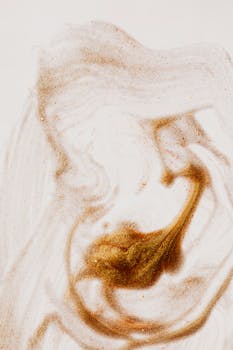Readable Image
Understanding the importance of Readable Image for SEO
Readable images play a crucial role in SEO (Search Engine Optimization) as they improve user experience and can positively impact your website’s ranking. When search engines crawl your site, they not only examine text but also images to determine relevance. Therefore, it is essential to ensure that your images are readable and optimized for SEO.
By using descriptive filenames and alt text, you provide search engines with valuable information about your images. This can help improve your chances of being discovered through image searches, leading to increased traffic to your website. Additionally, image optimization can also enhance the overall performance of your website by making it load faster.
Readable images not only benefit SEO but also enhance user engagement. When users come across visually appealing and relevant images on your site, they are more likely to spend time exploring your content. This can result in lower bounce rates and higher conversion rates, ultimately contributing to the success of your SEO efforts.
The impact of image size on SEO rankings
Image size plays a crucial role in determining SEO rankings as it directly impacts website loading speed and user experience. Large image files can slow down your site’s performance, leading to higher bounce rates and lower rankings on search engine results pages. Optimizing image size can improve your SEO efforts by decreasing load times and increasing user engagement.
Search engines like Google consider page speed as a ranking factor, and having oversized images can harm your search visibility. By resizing images and using the right file formats, you can enhance your website’s performance and attract more organic traffic. Utilizing image compression tools and maintaining a balance between quality and size is essential for SEO success.
Remember that mobile users are on the rise, and having large images can negatively impact their browsing experience. Ensure that your images are responsive and optimized for different devices to rank higher in mobile search results. Incorporating descriptive alt text and relevant filenames can also boost your SEO efforts and improve image search rankings.
How to choose the right image file format for SEO
Choosing the right image file format for SEO is crucial for optimizing your website and improving its ranking on search engines. Not all image file formats are created equal, and selecting the optimal format can make a significant difference in how your website performs. When it comes to SEO, you need to consider various factors such as file size, image quality, and browser compatibility.
JPEG, PNG, and WebP are the most commonly used image file formats for websites. JPEG is ideal for photographs and images with many colors, while PNG is best for images with transparency or text. WebP, on the other hand, is a newer format that provides high-quality images with smaller file sizes.
It’s important to optimize your images for web use by compressing them without sacrificing quality. This can help improve your website’s load speed and overall user experience. Choosing the right image file format is just one piece of the SEO puzzle, but it can have a significant impact on your website’s performance. Make sure to test different formats and settings to see what works best for your site and continually optimize your images for better SEO results.
Measuring the performance of images for SEO
Measuring the performance of images for SEO is crucial in optimizing your website’s ranking and driving organic traffic. Images play a significant role in enhancing user experience and overall SEO success. By analyzing how images perform on your website, you can make informed decisions to improve their impact.
Factors to consider when evaluating image performance include file size, alt text, relevance to content, and load times. Optimizing images by compressing files, using descriptive alt text, and ensuring they are relevant to the page content can boost SEO significantly.
Monitoring the performance of images through analytics tools can provide valuable insights into user engagement and behavior. By tracking metrics such as image clicks, views, and conversions, you can fine-tune your image strategy for better SEO results.
Remember, images are not just visual elements on your website; they are powerful tools for enhancing SEO performance. Measuring their impact and optimizing them accordingly can have a significant impact on your website’s search engine rankings and overall visibility.
Jun 4, 2024 … … image-only PDFs into readable ones. You can recognize text in a … From the menu, you can choose to scan all pages, the current page or a page …
Convert an Image-only PDF with Text Recognition in Adobe Acrobat …
Apr 8, 2014 … Should have emphasized how subtle I was talking. Like 20-30% and wide spread where you would hardly notice it. If it looks like a glow, or you …
website design – Text not very readable on different image …
… readable text, to images missing alternative text. For tips on resolving these accessibility errors, see the video tutorials provided on this page. For …
Alt Text is a brief text description of an image. Alt Text is read by screen readers (or other assistive tech) to provide information about the image's purpose …
Write helpful Alt Text to describe images | Digital Accessibility
While screen readers can read a full page to a user, screen reader users may … Treat image links as links, not as images. Adjacent Links. Pages should …
Apr 14, 2023 … Hi… I'm working on my first Hugo site. I usually use the Obsidian markdown editor to create pages and insert images. I drag an image into …
Markdown editor for text with images readable by both editor & Hugo …
… image. A QR code for the URL of the English Wikipedia Mobile main page. Whereas a barcode is a machine-readable optical image that contains information …
Use "real" text as all page content you expect everybody to be able to read. Use CSS to visually style it to achieve dynamic visual designs. When images of …
Do Not Use Images of Text | Digital Accessibility at Princeton
Utilizing alt text and image titles effectively
Alt text and image titles are crucial components of any website’s SEO strategy. By effectively utilizing them, you can improve your site’s accessibility, enhance user experience, and boost your search engine rankings. Alt text, also known as alternative text, describes the content of an image for those who may not be able to see it. It is important to use descriptive and relevant alt text that includes keywords related to the image. Image titles provide additional context and can also include keywords to further optimize your site for search engines.
When creating alt text and image titles, be sure to be descriptive, concise, and accurate. Avoid keyword stuffing and instead focus on providing valuable information for both users and search engines. By following best practices for alt text and image titles, you can improve the overall SEO of your website and drive more organic traffic to your site.
Aug 18, 2023 … … Image (1.43 MB) This image is of the actual Declaration of … Read a Transcript High-Resolution Declaration Stone Engraving Image (1.88.
Also, make sure that print to file and print as image are NOT selected. … • Images or logos in readable documents may not be "selectable", so focus on …
3. Foreign passport that contains a temporary I-551 stamp or temporary I-551 printed notation on a machine-readable immigrant visa.
13.1 List A Documents That Establish Identity and Employment …
Read our strategic plan. Panel Title. Advance Equity. Panel Content. Panel Copy. Advance health equity by addressing the health disparities that underlie our …
Top tools for optimizing images for SEO
As an SEO enthusiast, I have compiled a list of the top tools for optimizing images to improve your website’s SEO performance. These tools can help you enhance the visual appeal of your website while boosting your search engine rankings.
- 1. Adobe Photoshop: This powerful image editing software allows you to optimize images by adjusting their size, resolution, and quality.
- 2. Canva: Canva is a user-friendly design tool that provides templates and features for optimizing images for SEO purposes.
- 3. TinyPNG: This tool helps reduce the file size of images without compromising quality, improving page loading speed.
- 4. ImageOptim: ImageOptim is a Mac application that optimizes images by removing unnecessary data, making them lightweight for faster loading.
- 5. Kraken.io: Kraken.io is a web-based tool that compresses and optimizes images to improve website performance and SEO.
- 6. SEO Image Optimizer: A WordPress plugin that automatically optimizes images for search engines by adding alt tags and descriptions.
- 7. Google PageSpeed Insights: Use this tool to analyze your images and receive recommendations for optimizing them to improve page speed and SEO.
- 8. JPEGmini: JPEGmini reduces image file sizes for faster loading times and better user experience, ultimately benefiting your SEO efforts.
Aug 17, 2023 … Holograms are great security features, and tough to counterfeit. But if you add covert laser readable (CLR) images to them, it's virtually …
Regula on LinkedIn: What is a covert laser readable (CLR) image?
Jun 8, 2015 … … readable format for offline sharing? I'm clicking on this Pinterest link and the image, while attractive and eye catching, simply can't be read.
Tips for optimizing images for SEO
Optimizing images for SEO is crucial for improving your website’s ranking on search engines. One of the most important tips is to compress your images to reduce loading times, which can impact your site’s performance. Additionally, make sure to use descriptive filenames and alt text for your images to help search engines understand their content.
Another useful tip is to resize your images to the correct dimensions for your website to prevent them from slowing down the page. Strategic placement of images throughout your content can also enhance user experience and engagement, leading to better SEO results.
Lastly, don’t forget to create an image sitemap to ensure all of your images are indexed by search engines. By following these tips, you can optimize your images for SEO and improve your website’s visibility online.
Benefits of using Readable Image for SEO
Readable images are a powerful tool for enhancing your website’s SEO. They not only improve user experience but also contribute to higher search engine rankings. Here are some key benefits of incorporating readable images into your SEO strategy:
- Enhanced User Engagement: Readable images catch the audience’s attention and encourage them to stay longer on your site.
- Improved Accessibility: Including readable images makes your content more accessible to all users, including those with visual impairments.
- Boosted SEO Performance: Search engines can crawl and index readable images, leading to improved visibility in search results.
- Increased Website Traffic: Engaging images drive more organic traffic to your site and help you reach a wider audience.
- Higher Conversion Rates: Readable images can persuade visitors to take action, such as making a purchase or signing up for a newsletter.
- Brand Recognition: Using consistent and relevant images can enhance your brand identity and improve brand recall among users.
Best practices for using images on your website
Use high-quality images: When selecting images for your website, make sure they are clear, visually appealing, and relevant to your content.
Optimize images for web: Compress images to reduce file size without sacrificing quality. This helps improve loading speed and overall user experience.
Use descriptive alt text: Alt text provides context for search engines and screen readers, so be descriptive and include relevant keywords.
Consider image placement: Place images strategically throughout your website to enhance readability and engage users.
Mobile optimization: Ensure images are responsive and display properly on mobile devices to cater to a larger audience.
Avoid copyright infringement: Only use images that you have the rights to or are labeled for reuse to avoid legal issues.
Monitor image performance: Track the performance of your images using analytics to understand how they impact user engagement and conversions.
Common mistakes to avoid when using images for SEO
Over-Optimizing Alt Text: While alt text is important for SEO, stuffing it with keywords can be counterproductive and considered spammy by search engines.
Ignoring Image File Names: Renaming image files to be descriptive and relevant to the content can improve SEO, but many overlook this simple step.
Using Low-Quality Images: Poor quality visuals can impact user experience and site speed, leading to lower rankings in search results.
Not Optimizing Image Size: Large image files can slow down page loading times, affecting both SEO and user engagement.
Forgetting Image Sitemaps: Including images in XML sitemaps helps search engines discover and index them, improving visibility in image searches.
What are some common image optimization mistakes to avoid?
Overloading images with heavy metadata: Keeping image file sizes large due to excessive metadata can slow down your website.
Ignoring alt text: Alt text is crucial for accessibility and SEO, so always include descriptive alt text for images.
Using wrong image formats: Choose the right image format like JPEG, PNG, or WebP based on your needs to ensure optimal loading speeds.
Neglecting image compression: Compressing images without compromising quality is essential for faster loading times.
Forgetting image responsiveness: Ensure images are responsive to different devices for a seamless user experience.
How can alt text improve SEO for images?
Alt text plays a crucial role in enhancing SEO for images. When search engine crawlers index web pages, they rely on alt text to understand the content of images, boosting the overall SEO performance of the website. By including descriptive alt text that reflects the image accurately, you can improve the visibility of your images in search engine results pages. This, in turn, can drive more organic traffic to your website and improve its ranking. Therefore, incorporating relevant alt text is essential for optimizing image SEO.
What is the significance of image compression for SEO?
Image compression is crucial for SEO as it directly impacts your website’s loading speed. Faster-loading websites tend to rank higher in search engine results, leading to increased organic traffic. Compressed images reduce the file size without compromising quality, ensuring a seamless user experience while browsing your site. Optimized images also contribute to better user engagement and lower bounce rates, signaling search engines that your content is valuable to visitors. In summary, image compression is an essential SEO strategy to improve site performance, enhance user experience, and boost search rankings.
Are there any recommended image SEO plugins for websites?
Yes, there are several image SEO plugins that I highly recommend for websites. One of the top choices is Yoast SEO, which not only helps with overall SEO optimization but also provides specific features for image optimization. Another great option is Smush Image Compression and Optimization, which focuses on reducing image file sizes without compromising quality. Lastly, I suggest trying out SEO Friendly Images, a plugin dedicated to automatically optimizing alt attributes and image titles for better SEO performance.
Readable images play a crucial role in SEO rankings due to their impact on user experience and accessibility. Including relevant, optimized images can improve your website’s performance and search engine visibility.
Optimizing images can significantly enhance your website’s visibility in search engine results. Search engines prioritize websites with optimized images, leading to improved rankings and increased organic traffic. Don’t underestimate the power of image optimization in your SEO strategy!
Effective use of alt text plays a crucial role in increasing image discoverability by search engines. By providing descriptive alt text, websites can enhance SEO and improve ranking on search engine result pages.
Choosing the right image file format is crucial for optimizing page load speed and SEO performance. Make sure to select the most suitable format to enhance your website’s ranking and user experience.
Regularly monitoring image performance metrics is essential for SEO success. By keeping a close eye on these metrics, I can make informed decisions to improve my website’s search engine ranking effectively.
Keyword stuffing in image file names and alt text is detrimental for SEO. It can harm your website’s ranking instead of boosting it. Keep it natural and relevant to improve optimization efforts.

Albert Mora is an internationally renowned expert in SEO and online marketing, whose visionary leadership has been instrumental in positioning Seolution as a leader in the industry.









